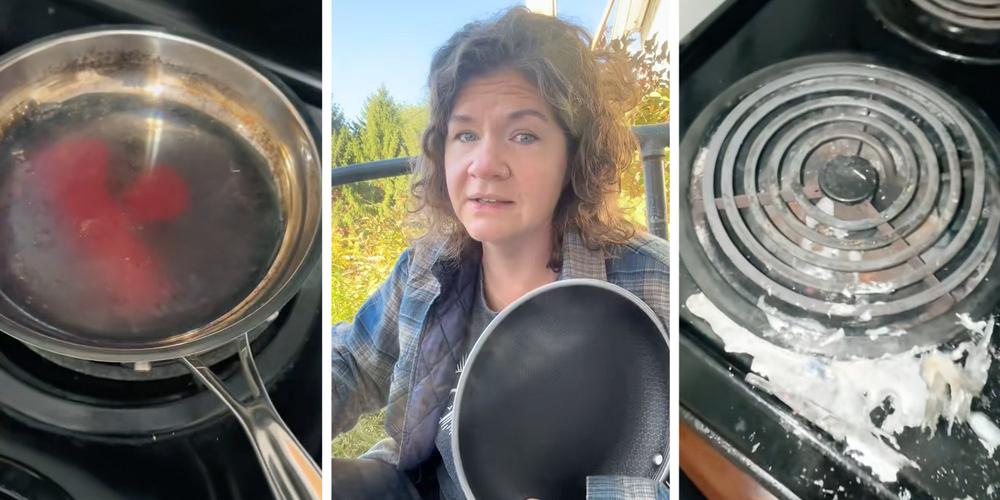A TikToker’s kitchen disaster turned into a viral metallurgy lesson after her “stainless steel” pan exploded on an electric stove.
Featured VideoWhen user @anniesright shared a video of molten metal spreading across her stovetop, Pennsylvania-based welder Anne (@highergroundwelding) stepped in with an unexpectedly captivating science breakdown.
In a 12-minute TikTok shared on Oct. 11, 2025, Anne explained that so-called stainless steel cookware is actually layered like candy—an aluminum core wrapped in stainless steel—and when overheated, those layers can separate and burst under pressure.
AdvertisementHer video racked up over 500,000 views and over 2500 comments from science fans on social media, grateful for the clear and captivating explanation.
“Ya just gotta nerd out a little!” Anne wrote in a reply to a commenter who watched the video and concluded, “See, my attention span is just fine.”
“It’s pennies and ravioli”: How stainless steel pans are really made
The welder explained that stainless steel pans aren’t actually solid stainless steel. They’re manufactured with a micron-thin layer of aluminum sandwiched between two layers of stainless steel.
AdvertisementLayers of disparate metal adhered to one another to optimize the pan’s utility. The soft aluminum core keeps cookware lightweight and enables it to conduct heat evenly across its surface, while the harder stainless steel shell withstands higher temperatures on the outside of the pan.
Like stainless steel pans, pennies, Reese’s, and M&M’s all have soft insides encased by hard shells: pennies are made from zinc wrapped in copper, Reese’s and M&M’s have gooey peanut butter and chocolate insides held by hard chocolate outsides.
But, as Anne explained, engineering has its limits. At excessive temperatures, the layers of metal in a pan can delaminate, or separate, causing an explosion like the one experienced by @anniesright.
Anne said the pan that exploded, “likely overheated causing the aluminum to melt.” She added that @anniesright’s technique, in combination with other factors (how electric stoves work, vulnerabilities in the pan’s surface), caused the heat to concentrate at a single point, resulting in a material failure.
Advertisement“Visible red glow confirms that the pan was being used at excessive temperatures. And that would be consistent with severe overheating to delamination temperatures,” Anne said.
“That foldy melty aluminum started to liquefy. It started to fill any available spaces, and it would have gone to the weakest point in the stainless steel. With probably just enough compression in there to burst through at a certain point… that pressure builds up.”
“It’s like a balloon ready to burst and then bang it does.” Like popcorn, or an overfull balloon, Anne explained, pressure builds until an explosion occurs.
@highergroundwelding Replying to @heygotanygwapes and @anniesright more welding hazards in the kitchen than most know! #learning #welding #metallurgy #science ♬ original sound – AnneAdvertisement
TikTok’s favorite welder gives a metallurgy masterclass
“This video made me realize 99% of the people I speak to on a daily basis have no idea what they are talking about.”
“Nothing captivates me like a person who really knows their stuff explaining uncommon events.”
Advertisement“See, my attention span is just fine.”
“So you’re saying it’s like a hot pocket and the cheese exploded out after heating it up.”
AdvertisementWho knew stainless steel pans were also apparently like Hot Pockets?
The internet is chaotic—but we’ll break it down for you in one daily email. Sign up for the Daily Dot’s newsletter here.

 Chandler explains how MrBeast’s team deals with backlash and hate on videos
Chandler explains how MrBeast’s team deals with backlash and hate on videos